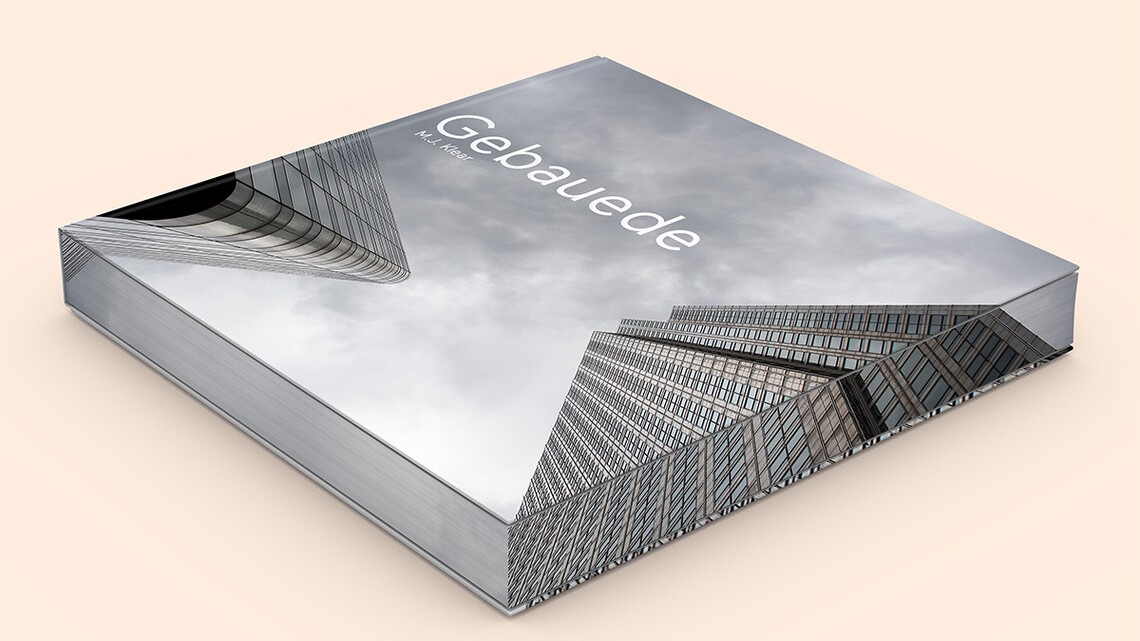At the 11-minute mark of this "Unvarnished" interview, Bubu CEO Thomas Freitag holds up a book that immediately grabs attention — not just for its cover, but for the intricate design printed on its edges. It's HP’s edge printing innovation in action. The technique that transforms book design by extending artwork beyond the cover, wrapping it around the entire book for a seamless, 360-degree creative effect.
For Bubu, an 80-year-old company known for its craftsmanship and innovation, edge printing is more than just a design trend. It’s a way to enhance storytelling, highlight artistic elements and create visually stunning print products that stand out. The technique opens up new creative possibilities for publishers and brands alike. Edge printing technology is particularly exciting when the printed design element emphasizes a book's contents, Thomas said. For Bubu projects like "Star Gazer" (shown below), it adds another dimension, making the book itself part of the artistic experience.
A Competitive Edge for Book Producers
Book publishers and commercial printers are constantly seeking new ways to make their titles stand out. Today’s consumers increasingly gravitate toward books that offer a decorative, artistic edge — literally. Whether the book is about fashion, architecture, poetry, photography or a different topic, edge printing provides a unique way to extend the visual storytelling beyond the cover. It empowers designers to integrate artwork across the book’s pages, creating a cohesive and immersive visual experience. And thanks to HP, these high-impact designs are now more accessible than ever.
Part of the HP SmartStream Designer variable data printing tool, edge printing takes cover design to the next level by automatically dividing an image into slices. These slices are printed consecutively on the edge of each page, allowing for intricate wraparound designs, seamless panoramic images, or even hidden messages that appear when the book is fanned open.
The page edges — referred to as the head (top), foot (bottom) and fore-edge (opposite the spine) — can all be printed on. The process works across a range of formats, from hardcover and softcover books to notebooks and invitations.
Spanish commercial and book printing specialist, Tórculo Comunicación Gráfica, was one of the first HP Indigo customers to trial edge printing. Using its HP Indigo 10000 Digital Press, Tórculo explored the technology’s potential for personalizing products such as notebooks and novels. Today, edge printing is helping a growing number of book printers worldwide to push the boundaries of creativity. At Bubu, the technique has become a defining feature in premium book production. The company's edge-printed products — ranging from hardcover books to luxury invitations — demonstrate how this technique can transform a simple print product into a visually immersive experience. "Unlike traditional edge painting or gilding, digital edge printing is automated, making it suitable for industrial print runs from 500 to tens of thousands," said Sabine Lenz, founder of PaperSpecs. As she notes in her PaperSpecs video, "The more intricate the image, the better!" Sabine has spent her career helping designers understand the full potential of print technology, and believes a gap exists between what designers know about paper and print and what’s actually possible. This gap often means that creative concepts don’t reach their full potential due to limitations in execution, she explains in this interview, so it's important for creatives to know about innovations like edge printing. A New Dimension in Book Design
As edge printing gains traction, it’s redefining what’s possible in book and commercial print production. With HP Indigo technology leading the way, print professionals and designers now have the tools to bring their boldest creative visions to life — down to the very last page edge.





